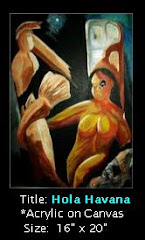Classic TV shows of the 1950s are often goldmines of early appearances by actors who – while not yet famous – were just learning their craft. In earlier blogs I’ve mentioned some of the earliest work of actors like Darren McGavin, Paul Newman, and Leslie Nielson.
The tough-guy, action star of the 1970s - Charles Bronson - in the 1950s was a journeyman actor, still a long way from fame and fortune.
Born Charles Buchinski in 1921, one of 15 children of a coal miner in Pennsylvania, and who spoke almost no English until he was a teenager- the odds of him becoming a matinee star were pretty long.
But after service in WWII (he was an aerial gunner aboard B-29s), he worked odd jobs and joined a theatrical group in Philadelphia where his interest in acting bloomed. Later, he moved to New York, and for a time shared an apartment with another aspiring actor – Jack Klugman.
In 1950 he married a fellow actor from Philly named Harriet Tendler, and moved to Hollywood, in search of a career. They divorced 15 years later.
He made a number of uncredited appearances in movies (You're in the Navy Now (1951),The People Against O'Hara (1951), The Mob (1951), The Marrying Kind (1952), My Six Convicts (1952)).
In 1952 he finally received screen credit in the Hepburn-Tracy classic Pat and Mike, billed as Charles Buchinsky.
After that, his face – but not his name – appeared in another half dozen features, including (Red Skies of Montana (1952), Battle Zone (1952), and Torpedo Alley (1953)).
He may not have been getting famous, but he was getting work, including an occasional appearance on a fledgling media called Television.His star ascended a bit more in 1953 when he played Vincent Price's mute henchman Igor, in the 3-D remake of House of Wax.
But it was his portrayal of a murderous Modoc warrior, Captain Jack, in Alan Ladd’s Drum Beat in 1954 that garnered him is first real notice in Hollywood.
That year, during the infamous red-scare of the 1950s, his agent suggested he adopt a less eastern European sounding surname, and so he changed it to Bronson.
Soon Bronson was getting work in both TV and the movies. Most of his movie roles were either supporting characters, or - as in the case of Roger Corman’s Machine Gun Kelly (1958) – low budget affairs.
Typical of his early TV work are the following two appearances, both from The Internet Archive.
Federal Men: The Case of the Deadly Dilemma
An undercover federal agent (Charles Bronson) trying to penetrate a counterfeiting ring runs into a big dilemma when the boss asks him to kill a man.
Public Defender: Cornered-With Commercials
A young has been boxer (Charles Bronson in an early TV role) makes an agreement with the Public Defender to turn himself in for a probation violation.
In 1958, ABC TV (which was, at the time, languishing far behind CBS and NBC in the ratings) offered Charles Bronson his own TV series where he would portray an ex-combat cameraman turned freelance photographer, who often ended up embroiled in peril and intrigue.
The show was Man With A Camera, and it’s premise was a handy device to let Bronson’s character – Mike Kovac – insert himself into other people’s problems.
Only 29 episodes were filmed, and they were shown on Friday nights (9 pm EST) during the 1958-1960 seasons.
All 29 episodes are available online. You can access them either through the IMDB Video gallery or directly from the Internet Archive.
You’ll find a number of very familiar faces showing up in guest appearances on this series, including Sebastian Cabot, Anthony Caruso, Yvonne Craig, Angie Dickinson, Tom Laughlin, Ruta Lee, Gavin MacLeod, and Grant Williams.
While the series was short-lived, Bronson’s career continued to flourish. In 1960 he co-starred in John Sturges' western classic The Magnificent Seven and in 1963 he was featured prominently in The Great Escape.
He worked a couple of short-lived TV series in the mid-1960s; Empire and The Travels of Jaimie McPheeters.
In 1967 he co-starred with Lee Marvin and Ernest Borgnine in the classic war film, The Dirty Dozen.
While becoming very well known in the United States, Bronson’s star was rising even faster in Europe, where he was very popular. He starred as Harmonica in Sergio Leone’s Once Upon a Time in the West and reportedly turned down the lead in A Fistful of Dollars, which helped propel Clint Eastwood to stardom.
Real fame in the U.S. came from his Death Wish series of movies, which started in 1974 and lasted until 1987 with Death Wish IV.
That series, along with films like Telefon, Ten Til Midnight, The Evil That Men Do, and Messenger of Death helped make Bronson one of the top box office stars of the 1970s and 1980s.
While many people are familiar with post-1960 career, we are quite fortunate to have access to his earlier work on the Internet Archive.
Bronson died in 2003, at the age of 81, after a long illness. His second wife, actress Jill Ireland had passed away in 1990, from breast cancer.








1 comment:
I've seen him in Bonanza and really liked his version of The Mechanic.
Post a Comment